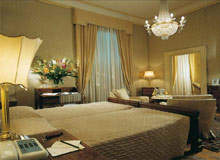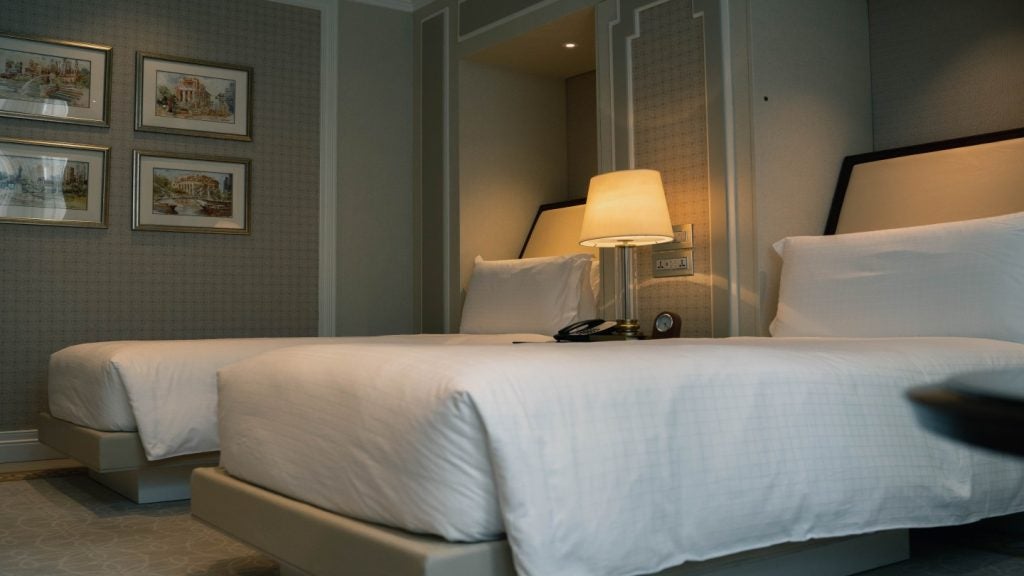
The four-star Hotel Quirinale in the heart of Rome is steeped in history. Built in 1865 as part of the project to build the adjacent Rome Opera House, with which it still shares an interconnecting door, it aims to reflect a sense of historical grandeur.
Although redecoration is an ongoing process, the hotel has always retained its original look. Recently, when it needed to upgrade its safety standards and disabled access, it took the opportunity to improve services and carry out general refurbishment.
As Johanna Fragano, general manager of the Hotel Quirinale, and first vice-president and EHMA national delegate for Italy and Malta, explains, sensitivity and compromise were crucial. As the hotel remained open during the works, it also required careful planning so guests were not disturbed.
MAINTAINING A SENSE OF HISTORY
The Quirinale is an impressive property with 210 rooms furnished with antiques from the period of its construction. When it opened, the hotel had many facilities considered exceptional for the time, such as en suite bathrooms, electric lighting and hot water.
See Also:
Panelled and cream walls, parquet floors, antique light fittings and furnishings all contribute to the hotel’s atmosphere, and this look has been rigorously maintained.
How well do you really know your competitors?
Access the most comprehensive Company Profiles on the market, powered by GlobalData. Save hours of research. Gain competitive edge.

Thank you!
Your download email will arrive shortly
Not ready to buy yet? Download a free sample
We are confident about the unique quality of our Company Profiles. However, we want you to make the most beneficial decision for your business, so we offer a free sample that you can download by submitting the below form
By GlobalDataThe main change to the Quirinale during its 140-year history has been to the interior plan, when some rooms were sacrificed to incorporate the amenities necessary to maintain its status as a luxury hotel.
Last year, when the hotel’s safety standards and disabled access were upgraded, it also brought its communications up to date. As the latest project covered all areas of the hotel, the management tied the work in with other improvements to provide more obvious benefits.
Today’s guests expect a higher standard of communications, so entertainment systems, roaming internet access and enhanced TV services were added. Behind its antique, imperial facade, the Quirinale is now wired for the 21st century.
“We rebuilt without the hotel closing down, so we did the work floor by floor. It was important to retain the original, antique feel of the hotel, which is a plus for the property, so we tried to change as little as possible. However, we did add new technology like Wi-Fi internet access,” says Fragano.
“Guests’ expectations mean we must provide a safe environment and modern facilities, but we did not want to ruin the atmosphere,” she adds.
ACHIEVING THE LOOK
Creating a contemporary style in a hotel requires a careful choice of designer and a sound collaborative framework. However, for properties like the Quirinale, which largely preserve their original architecture and decor, the design is already in place, so the key relationship is with a supplier.
In complying with current fire safety regulations, the soft furnishings needed to be replaced. Curtains and carpets, for instance, comprise a strong element of the interior design, so substitutes had to be found that could replicate the original patterns with the same appearance of luxury and quality.
Finding the right supplier was not easy, but once a sufficiently high-quality and reliable partner had been identified, the reproduction of the fabrics using fire-resistant materials was relatively simple.
ACCESS FOR ALL
Although the management considers disabled access to be important, it posed some design challenges. Accessibility is most problematic in the lobby, where guests must climb a staircase to reach the main elevators and restaurants and descend some steps to reach the garden.
Fragano explains: “It was hard to blend this modern technology with the antique style, but we found mini-elevators that were clear, and therefore less obvious. You have to compromise, so we are happy with the result.”
MANAGING DISRUPTION
Throughout this refurbishment process the Hotel Quirinale remained open for business, but Fragano does not believe that this is automatically the right choice.
Staying open requires careful scheduling of work, the closure of parts of the hotel and, therefore, some loss of revenue. Furthermore, it can sometimes be difficult to preserve a luxury experience while workmen are rewiring and redecorating other parts of the hotel.
Fragano says: “It is difficult to make big changes without people noticing. We didn’t want noise and dust, so we closed off areas around the work and we ensured that there was no noise before 9am and during the early afternoon. That made it more complicated and expensive.”
It is not just the area being worked on that needs to be closed off, a buffer zone also has to be created to ensure guests remain undisturbed by noise. This has to be taken into account when calculating the potential revenue loss.
“We could have shut down, but Quirinale is a well-known name and we didn’t want to drop out of circulation. We’ve been around for too long. Frankly, though, staying open has its pros and cons,” Fragano continues.
Staying open certainly keeps the brand in the marketplace, but Fragano believes that this may increase both the duration and the cost of the work.
To operate successfully during refurbishment the hotel management must also devote a lot of energy to managing the relationship with contractors, who want to complete the project as quickly as possible. Management needs to balance this with its need to protect guests from disturbance and minimise any disruption to the hotel’s operations.
Fragano admits that this can be difficult to achieve, so the issue must be addressed early on in the relationship: “You need to lay down the rules and be clear about where the power lies. If you do not shut, then you have to protect your guests. Remember, your guests don’t care about your long-term plans for the hotel.”
Above all there is one thing that Fragano feels must be grasped at the outset of any refurbishment project:
“It will always be more complicated and expensive than you expect. You need more time than usual, so safeguard your clients’ well-being and you will need to block off more rooms than you think. When you do the budget, know that it takes longer and it will cost you more,” she observes.
No doubt there are many hotel managers who know from experience that this is good advice.







